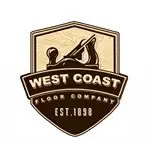There are a lot of decisions that will need to be made when considering new flooring for your home. If you have narrowed down to hardwood vs laminates, tile, or carpeting the next logical decision will be to choose prefinished vs on-site finished hardwood flooring. Solid hardwood floor has many benefits and a timeless beauty that is hard to duplicate, that is why it is still a favorite choice for many home and business owners. Choosing a factory pre-finished hardwood floor may be the ticket for you. Let’s take a closer look at the
Pros and Cons of Prefinished vs On-Site Finished Hardwood Flooring
- Immediate access to your new floor.
Solid hardwood floors need to be finished with a durable top coating to protect the wood and withstand foot traffic. Floorboards that are finished on-site with oil-based or water-based polyurethane require time to dry. Sometimes, a homeowner may have to wait for days before furniture can be moved back into the room even though the floor may feel dry to the touch. Unless the top finish has totally cured it can still be vulnerable to scraping.
- Factory finished hardwood floors have fewer VOCs to affect your family’s health.
For days after applying an oil-based polyurethane, you will smell and breathe in vapors from polyurethane resins and solvents. Volatile organic compounds (VOCs) have been shown to be carcinogenic. Some waterborne polyurethanes produce them, too. On the other hand, when you buy prefinished, the curing process takes place in a factory, not in your living room.
- No worries about dust with prefinished flooring.
On-site staining and varnishing require a clean environment and dust and errant hairs are the enemies. Pre-finished hardwood flooring is varnished in a sterile environment so that these annoyances won’t occur. You will, however, still need to protect prefinished floors from scrapes caused by moving furniture, pet claws, and such.
- Installation of prefinished flooring can be done in one session.
A crew of two can get a 300-square-foot pre-finished wood floor installed, with underlayment, in about two hours. No need to plan for days of not being able to use the space.
- Factory-applied finishes are nearly flawless
Not only are they better than what contractors or DIYers can apply on-site, but these factory-applied finishes are also incredibly durable and often come with a lifetime warranty.
- Prefinished floors are less expensive.
Prefinished solid wood floors initially cost more than unfinished wood flooring. But once you factor in finishing costs, prefinished ends up being less expensive.
Now that I have pointed out the benefits of prefinished wood flooring, let’s also discuss the merits of on-site finishing.
- Unfinished floors are preferred when the space is under construction or in the case of a large renovation.
Many contractors prefer to wait until the end of the job to finish the floor. That way, a dropped tool or a mortar pebble under a work boot can’t mar the finished floor—and ruin customer relations.
- Greater choice of finishes.
There is no question that the site-finished route opens up a greater variety of choices with respect to color and shade. Prefinished products, however, come in more species and stains than ever before.
- Unlike prefinished floorboards, unfinished boards have no bevels.
Prefinished floorboards usually have micro-bevels on all edges. These bevels hide slight discrepancies between board depths and widths. Inevitably, some homeowners will prefer the flush look of site-sanded floors, as they feature no such grooves and can be finished to a mirror-like surface.
As you can see, there are pros and cons to both types of wood flooring. If you like the idea for more stain and top finish customization on-site finishing may be the ticket for you. On the other hand, if the speed of installation and use is what is important to you, factory-finished is what you want. Either way, we can help you make the choice that works the best for you. Just give us a call at (707) 864-2199 to arrange for a visit to our showroom or a Covid-safe in-home consultation.
